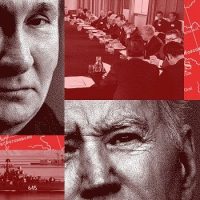
Soy historiadora de la Guerra Fría. Estamos en una nueva y aterradora era
Mantener estables la velocidad, la altura y el rumbo: ese era el mantra para los pilotos estadounidenses que a menudo se encontraban con aviones soviéticos durante la Guerra Fría. Y los soviéticos solían devolver el favor.
Frente a la costa cercana a la ciudad portuaria rusa de Vladivostok, los pilotos de los helicópteros procedentes de las fragatas de la Marina echaban un ojo a la flota soviética en la década de 1980 con frecuentes vuelos de vigilancia. Los estadounidenses acabaron esperando un patrón de conducta: normalmente, al cabo de unos 20 minutos de que sus helicópteros hubiesen despegado, los aviones de combate soviéticos MiG-27 ajustaban su mira para obtener una primera identificación visual de la aeronave estadounidense.… Seguir leyendo »

